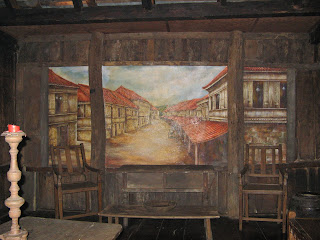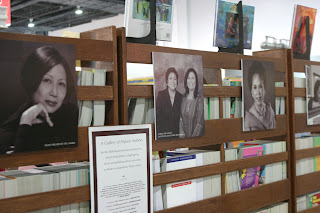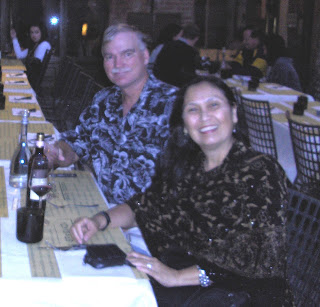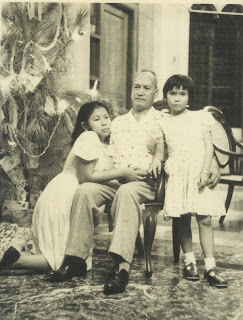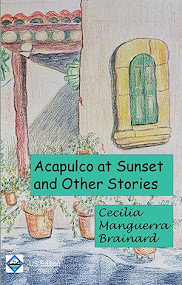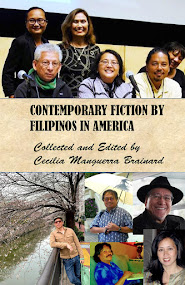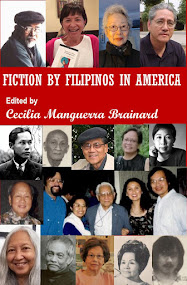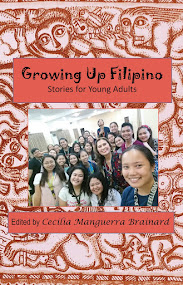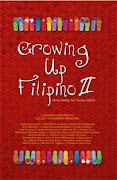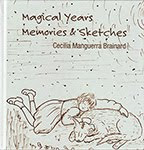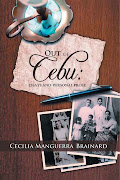(I found this essay in my files. This was first published in Filipinas Magazine.)
By the time I was a teenager, the Philippines had been a colony of Spain and the United States for a combined time of some four centuries. The dominating concept of beauty was Western; “white” was beautiful, “brown” ugly. When Gemma Cruz came around and won the Miss Universe contest of 1967, she changed the idea of beauty in the Philippines. Before her, all other Filipina beauty queens sent to international contests were mestizas, very European-looking. Her victory marked the decline of the colonial idea that fair was beautiful, and dark evil. Even Disney images showed blonde Snow Whites and Cinderellas, and dark-haired wicked stepmothers and witches.
Unknown to many, there were several foreign visitors to the Philippines who wrote about the beauty of the Filipina. I’ve put together here some excerpts of those writings.
As early as 1521, Antonio Pigafetta, Italian chronicler of Magellan’s voyage around the world, made some interesting observations about the women of Cebu. He wrote: “The prince led them (Spaniards) to his house, where he had four very beautiful girls, and almost white like ours, and he had them dance to metal cymbals, with them all naked, and he gave them refreshments, then they returned to the ship.”
Of the queen, Pigafetta reported, “The queen was very young and beautiful, covered with a white cloth, her mouth very red, a hat on her head with a crown on top of it like that of the Pope. And the hat and crown were made of palm leaves, and she goes nowhere without this crown.”
“One day,” he said, “the queen came with great pomp to hear mass, three young girls went before her with three of her men, hats in hand. She was dressed in black and white with a large gold-bordered silk veil on her head, which covered her shoulders. And on top of it she wore her hat. And many women followed her, who were barefoot and naked, except around the shameful parts, and a small kerchief around their heads, their hair loose.”
***
Antonio de Morga, a Spanish official in Manila from 1595 to 1603, wrote the history of the Philippines during the sixteenth century (Sucesos de las Islas Filipinas). He has interesting descriptions about the inhabitants of Luzon:
“They are of average height, are the colour of cooked quinces, and both men and women have fine features. Their hair is very black...they are very clever at anything to which they put their hands, they are sharp, hot-spirited, and determined.”
Even though he was not appreciative of the native custom of blackening their teeth, De Morga continued his respectful description:
“The women in the whole of this island wear jackets, with sleeves of the same stuffs, and of different colours: these they call varos (baros), they do not wear a chemise but have a white cotton wrap around the wasit, falling down to the feet. They also wear other coloured garments around the body, like mantles, which are very graceful. The principal women wear crimson ones, some made of silk, and other of cloths woven with gold, trimmed with fringes and other ornaments. They wear many gold necklaces, and have bracelets on their wrists and wear huge wrought-gold ear-rings, besides rings of gold with stones upon their fingers. Their hair, which is black, is gracefully tied up in a bowknot at the back of the head... The chieftains wear braids of beaten gold of varied design and many of them wear shoes, and their womenfolk also have dainty footwear, many using gold-trimmed velvet shoes, and white petticoats.
“Both men and women, especially the chief people, are very clean and tidy about their person and garments, and of goodly and graceful carriage. They are very particular about their hair and take a pride in having it very black; they wash it with the boiled bark of a tree called gogo and anoint it with oil of sesame mixed with musk and other perfumes.”
The Frenchman, Guillame Joseph Hyacinthe Jean Baptiste Le Gentil de las Galasiere, published in 1769 A Voyage to the Indian Seas, a record made shortly after the British troops pulled out of Manila. Le Gentil preferred native and mestiza women to the Spanish women in Manila whom he dismissed as deformed.
“For my part,” he said of the Filipino, “their color seems to me even more strange, and I find it difficult to compare it with anything. To me, it seems to approach more closely a light dead leaf color. The color of the women is lighter. They have beautiful black hair, of which they take great care, washing it with perfumed oil. They say that they do this to keep if free from dandruff, which, without the oil, would be quite considerable; but it is possible that a little vanity enters into this. However, the fact is that I have never seen among any other people with such beautiful hair as that of the native women of Manila. They wear it very long. It is by no means unusual to see women with very thick hair, so long that it touches the ground when they stand upright. They take pride in having long hair, and it would be impossible to inflict upon them a greater misfortune than cut it off. They do not use any ribbons or bands to die up their long hair. The men as well as the women braid their hair and tie it in a knot on top of the head. They have beautiful eyes, well shaped and black. Some of them have gray eyes...”
“They wear a kerchief, with a red border, around the neck. These kerchiefs are a great luxury in Manila...Wealthy women wear one over the hair, another around the neck, and carry another in the hand...
“The women’s chemises do not come down as far as the men’s shirts, and they are also worn very loose. They are made open at the throat and very low cut, so that they barely cover half of the breast. They are not made with cuffs like the men’s shirts, and are not fastened with buttons.
“For the rest of the body the women use a length of cloth which they wrap around themselves, tucking one of the ends in at the waist. This covering is called a tapis. The tapis is worn by all the native women of this archipelago. It is ordinarily made of silk and only comes down to the middle of the calf of the leg.
“...One sees women who have skirts of Indian cloth, made with tucks almost like those of our women, but they never go out without putting a tapis over the skirt. The foundation color of the tapis is chestnut brown, sometimes solid, sometimes with thin red stripes, and sometimes traversed by large red bands, occasionally embroidered. Over all this the women wear a sort of cape made in the Spanish style, with which they cover the whole body from head to foot. Around their necks, on their breasts, on their wrists and on their fingers they wear gold jewelry. A woman must be poor indeed not to have any. When they go out they wear very clean slippers embroidered with gold or silver. I do not understand how they can keep them on, for these slippers are as narrow and short as can be. They are in fact made in such a way that only the four big toes can be put inside, the little tow being left outside; and they are so short that these women have more than half of the heel projecting beyond the slipper. They wear a very large pin of gold or silver, very cleverly worked, which they use as an ornament for the coil they make of their hair.”
He contradicted a Franciscan friar’s statement that the native women wore modest clothes. “For my part, I take the liberty of not being entirely of this opinion. These garments are perhaps the most immodest which one could imagine...In order to get an idea of this clothing, outside the church, one must imagine a very pretty mestiza girl with a fine figure (as almost all of them have), whose beautiful black hair is piled up in a coil on her head, and the coil fastened with a gold pin. She wears a magnificent kerchief, embroidered and fastened so that it stands upright and goes around the head in such a way as to leave almost all the hair visible. The chemise, over which they put nothing, is loose fitting and made of a fabric so fine that it conceals nothing. Furthermore, this chemise is cut so low - that is to say, so open at the top - that it leaves uncovered the upper part of the shoulders and half of the breast. It is true that almost all these women wear an embroidered kerchief over the chemise; but this kerchief, to my mind, is nothing but a refinement of coquetery - indeed, it is not fastened in front, as our women wear it; the two sides and two bands hang carelessly under the arms.
“The skirt comes under the chemise and does not prevent it from floating loosely. A clean tapis is put over this skirt; but as it does not come more than half way down the leg, it exposes all the lower part of the skirt; and the tapis is wrapped so closely that from behind one can see the shape of the body. Add to this the tiny slippers the native women wear and which, with the tight-fitting tapis, perhaps require them to adopt their peculiar style of walking, and you will get an idea of the modest garments of the native women of the Philippines!”
***
Another Frenchman, Paul P. De La Gironiere, who lived in the Philippines from 1820 to 1840, wrote Twenty Years in the Philippines, in which he described his adventures in the archipelago and the estate he created, Jalajala. He too admired the women of the Philippines:
“In the evening, Spaniards, English, and French, go to the promenades to ogle the beautiful and facile half-breed women, whose transparent robes reveal their splendid figures. That which distinguishes the females half-breeds (Spanish-Tagalogs, or Chinese-Tagalogs) is a singularly intelligent and expressive physiognomy. Their hair, drawn back from the face, and sustained by long golden pins, is of marvellous luxuriance. They wear upon the head a kerchief, transparent like a veil, made of the pina fibre, finer than our finest cambric; the neck is ornamented by a string of large beads fastened by a gold medallion. A transparent chemisette, of the same stuff as the headdress, descends as far as the waist, covering, but not concealing, a bosom that has never been imprisoned in stays. Below, and two or three inches from the edge of the chemisette, is attached a variously coloured petticoat of very bright hues. Over this garment, a large and costly silk sash closely encircles the figure, and shows its outline from the waist to the knee. The small and white feet, always naked, are thrust into embroidered slippers, which cover but the extremities. Nothing can be more charming, coquettish, and fascinating, than this costume, which excites in the highest degree the admiration of strangers. The half-breed and Chinese-Tagalogs know so well the effect it produces on the Europeans, that nothing would induce them to alter it.”
***
Robert MacMicking, a Scot who lived in Manila and wrote Recollections of Manila and the Philippines (during 1848, 1849, and 1850) had his own opinion:
“A number of the women are very beautiful, for although their skin is dusky, the ruddiness of their blood shows through it on the cheek, producing a very beautiful colour, and their dark, lustrous eyes in general lit up with intelligence and vivacity of expression, than those of any Indians I have seen elsewhere.
“A very pleasant trait, to my taste, is the nearly universal frankness and candid look that nature has stamped upon their features which, when accompanied by the softness of manner common to all Asiatics, is particularly gratifying in the fairer part of creation.
“Their figures are well shaped, being perfectly straight and graceful, and nearly all of them have the small foot and hand, which may be regarded as a symbol of unmixed blood when very small and well shaped, as although the mestizas gain from their European progenitor a great fairness of skin, they generally retain the marks of it in their larger bones, and their hands and feet are seldom so well shaped as those of the pure-bred Indian, even though the Spaniards are noted for possessing these points in equal of greater perfection than the people of other European countries.
He too made note of their hair, “as one of the most remarkable beauties in the native and mestiza women, being very much longer and of a finer gloss, than that of any Europeans.”
***
The reader should not be misled into thinking that all foreigners’ accounts recorded Filipinas as beautiful because there were critical ones, curiously by Americans who visited the Philippines at the turn-of-the century. But for now let us glory in these early reports of admiration for our Filipino women
~emd~
